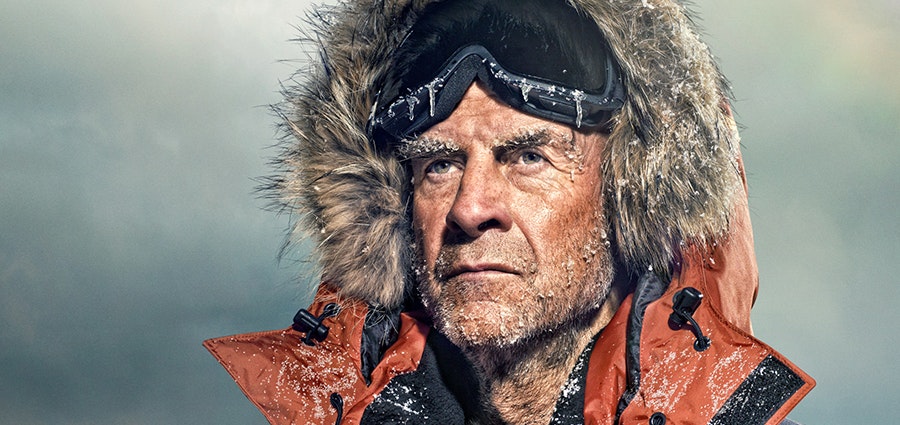
Aventum is a Group built on the fundamentals of adventure and daring to discover.
No one better encapsulates this ethos than our brand ambassador Sir Ranulph Fiennes. His is a life built on going further and achieving more than what anyone thought was possible, whether by becoming the first person to reach both the North and South Poles without flying, or the first person to cross Antarctica by foot.
Speaking to us on the launch of the new Aventum brand, Sir Ranulph explained how whatever the chosen field, from polar exploration to the business world, you need people with adventure in their DNA to go places no one has been before.
“They need to be bold and self-assured,” he says of what it takes to be an adventurer or pioneer in any given area. On our ethos of ‘daring to discover', Sir Ranulph says this is a particularly strong mantra for a company like Aventum “because business today needs to alter ever more rapidly in the evolving digital world.”
But he explains that when going on his polar expeditions there is a line he would draw between what is daring and what is reckless. The key is keeping well away from this line, while still embracing the spirit of discovery. “Recklessness avoidance is our business.”
He says. “Our rule was simple – avoid the fine line. The fine line can lead to failure very easily. It is better to look at our predecessors’ reasons for failing, for example to break a world record, and see where they have taken a risk and failed.”
By doing careful and meticulous research of his predecessors’ failures, Sir Ranulph says he would then use this information to consider the challenge in a different way, and consider alternative approaches that could remove this risk from the equation.
“Although you want to go north, perhaps first of all going west or east, and then going north, is the best way to achieve this,” he adds. “In doing so, we find a way of not facing the same risk as our predecessors in the first place, and the avoidance of the fine line is complete, rather than partial.”
And Sir Ranulph brings this attitude to any challenge that seems insurmountable, revealing his teams would make a point of evolving their methods over repeat attempts in order to reach a goal.
“If you take our journey to the North Pole in the 80s, we went on maybe four or five separate expeditions, learning from the previous one the best methods of travelling over sea and ice for the 1,000 miles necessary to break the record and beat our rivals, the Norwegians,” he says.
“We would change our next attempt every time. Even if every attempt at going by land to the North Pole had been made in the past from Canada or North America, we would get onto Putin and ask if we could have permission to do a British attempt from Siberia. We would look at it from every angle when apparently it’s insurmountable.”
It comes down to being on a constant journey of learning from what went wrong on previous occasions, and fixing those wrongs to do things better – something there is certainly a lot of potential for across the world of (re)insurance.
But to do this also requires another important quality – resilience.
Sir Ranulph’s life is certainly one of resilience and bouncing back from set-backs to succeed in your goals. Just as we were initially turned away on our first attempt to become a broker at Lloyd’s, Sir Ranulph initially failed in his attempt to climb Everest – in fact he failed on his first two attempts.
The first, in 2005, was due to suffering an angina attack at 28,500 feet – just 300m from the summit, having attempted the feat on the more difficult Tibetan ascent.
He came back in 2008, this time scaling the easier Nepalese side, but was again unsuccessful just five hours from the top.
It was only on the third attempt, in 2009 at the age of 65, that he was successful, becoming the first British OAP to reach the summit. He credits this in large part to recruiting Sherpa Thundu to help guide him up the mountain on this occasion, and the innovative ways of thinking about the challenge he brought to the party.
“Sherpa Thundu was known to treat the people he guides not like they normally do as a tourist, but as a human with failures,” Sir Ranulph says. “He had worked out what I was doing wrong, so that by the time we got up to 28,500 feet he knew my every failure and told me what to do and what not to do, and it was very easy, and I couldn’t work out why I had failed the previous two times.”
"Teamwork, he says, and having strong leadership able to both dictate and listen in equal measure, is vital to overcoming challenges."
It can take a lot of hard work to get there, but with the extreme effort can come extreme satisfaction, he advises.
Becoming the first person to circumnavigate the world along its polar axis was a 10-year odyssey for Sir Ranulph – spending the first seven years planning out the journey with his wife Ginny, and getting 1,900 sponsors to stump up £29m to fund the voyage – and then another three years between 1979 and 1982 completing the mission with fellow explorer and friend Charlie Burton.
But, writing on the final day of that epic challenge, when he thought they were going to fail after all that time, the joy that then came with succeeding was unlike any other he had felt before.
Relaying the moment, he said: “After three months of floating on an ice flow which was getting smaller and smaller, on the last part of our journey coming down from the North Pole above Russia, when I thought we were going to fail after all that time, – I wrote ‘I saw two match sticks upon the broken horizon along the line of my bearing, then I saw them again, the distant masts of our ship. I cannot describe the joy of that second – I found tears streaming from my eyes, and I yelled aloud to Charlie ‘I think that was the single most wonderful and satisfying moment of my life.’”
LATEST ARTICLES
We never stand still, and are constantly looking for new ways to grow and improve how we do business. Read the latest about what we are doing here.
Discover more-

14.04.2025
A Desert Storm: Bearman’s Bahrain Bounceback
Bahrain might be known for its spectacular sunsets and rich history, but the 2025 Formula 1 Grand Prix was all about resilience for Ollie Bearman.
Read more -

08.04.2025
The Power of Recognition: Aventum Applaud Awards 2025
When people feel valued, they bring their best. That’s why, at Aventum, we launched Applaud, our new employee recognition platform designed to make giving and receiving feedback easier than ever.
Read more -

06.04.2025
Turning Up The Heat in Suzuka: Bearman’s Best Yet
The third race of the season took us to one of the most iconic circuits on the racing calendar, Suzuka.
Read more

